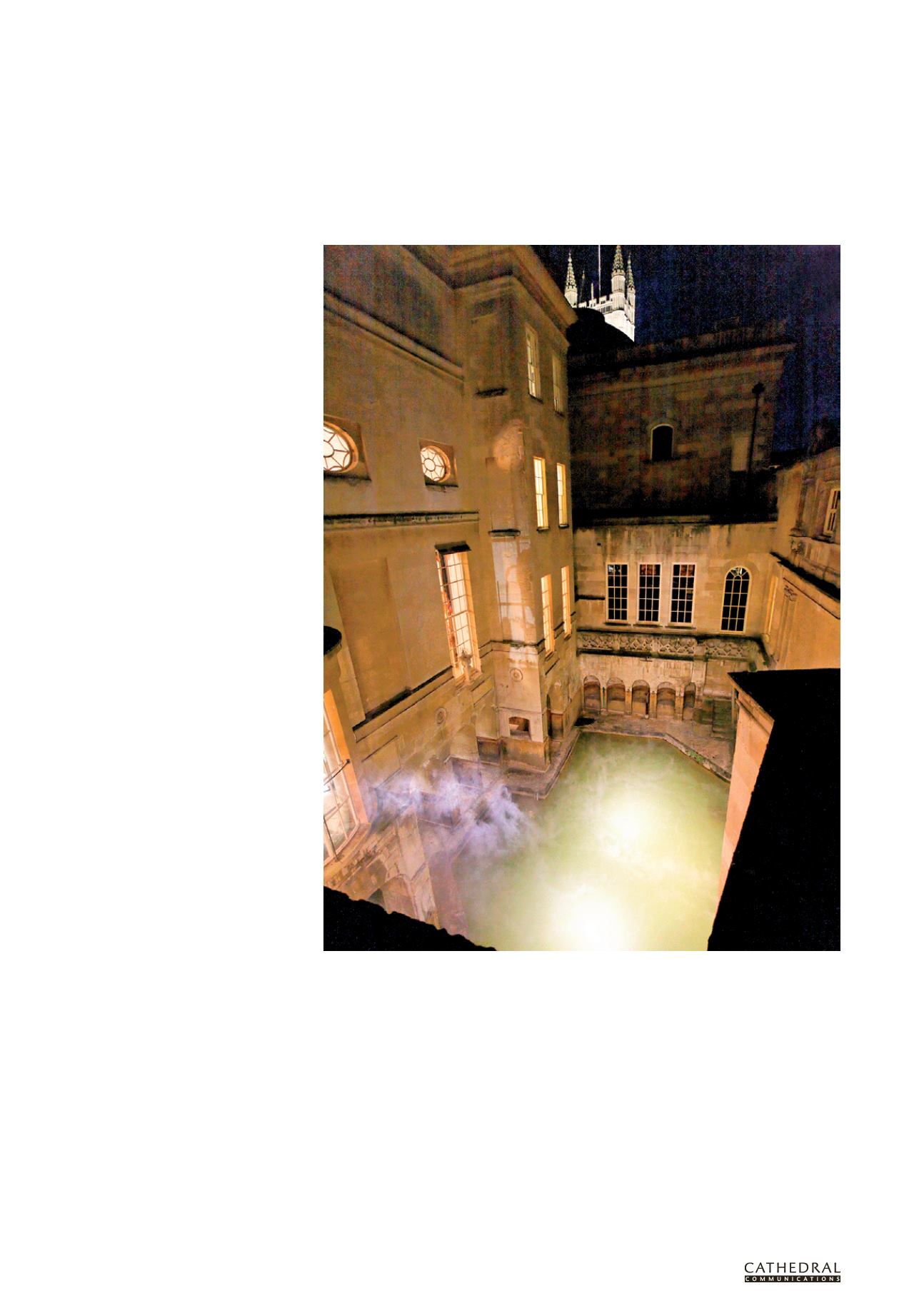

1 5 0
T H E B U I L D I N G C O N S E R VAT I O N D I R E C T O R Y 2 0 1 6
T W E N T Y T H I R D E D I T I O N
4.2
SERV I CES & TREATMENT :
HEAT I NG & L I GHT I NG SERV I CES
Specifying a luminaire that is in keeping with
the building but is functional and efficient is
the aim.
The Clore Education Centre at Hampton
Court Palace comprised a new single-
storey reception building, an external
courtyard and the refurbishment of the
17th-century barrack block to provide
new educational facilities for visitors.
It was vital that the design complemented
the architecture, while using the latest
technologies to ensure longevity. In the
Learning Courtyard, the solution depended
T
HE MAJORITY
of our historic buildings
existed long before Edison had even
thought about his lamp. Today, however,
artificial lighting is indispensable both within
these buildings and in the wider historic
environment.
Any lighting design that affects historic
buildings requires creative solutions to
ensure that the scheme impacts positively
and minimally on the historic environment,
creating a visual scene that harmonises the
lit appearance of architectural and landscape
elements. One of the key challenges is
balancing the existing architecture with the
introduction of a modern lighting system.
How the lighting will render the architecture,
in terms of lighting effect and equipment, is
central to the success of any scheme.
MINIMISING IMPACT
Lighting equipment should be in keeping
with both the architectural scene and the
surrounding landscape or townscape.
When working on a historic building
it is important to limit the impact of the
luminaires on the exterior fabric. This can be
achieved by careful positioning, minimising
the size and number of fittings, and using
bespoke fixings. The rise of LED technology
has seen the introduction of smaller fittings,
allowing installations that are almost invisible
during the day. As well as reducing physical
impact, LEDs have low running costs and long
lamp life.
The location of luminaires is crucial. Wall-
mounted luminaires can help to remove visual
clutter. In narrow lanes and thoroughfares, for
example, mounting luminaires on an adjacent
building can allow for a cleaner appearance.
If sympathetically located, luminaires can
add a lit rhythm to the facade, highlighting or
accentuating structural elements. This does,
however, depend on the suitability of the facade
and the architecture of the building, which
will often dictate the mounting locations.
Mounting luminaires to the building
will generally be a cost-effective method,
as it removes the requirement for columns.
However, column-mounted lanterns can
introduce flexibility because their location,
height and spacing are not dictated by the
profile of the facade.
It is also important to consider light
containment and how to provide power and
control to the luminaires. The historical
significance of the King’s Bath, which lies at
the heart of the Roman Baths and Pump Room
complex in Bath, meant that the location of
luminaires was dictated by existing fixing
positions and existing wiring routes were used
wherever possible. Projectors were fixed with
a bespoke bracket that allows them to be easily
EXTERIOR LIGHTING DESIGN
SIMON DOVE
accessed for maintenance, while the clamping
method used to attach the projectors prevents
damage to the structure.
TRADITIONAL OR CONTEMPORARY?
The style of luminaire and how it will sit
in the historical context must be carefully
considered. Traditional designs can be used
successfully, but there is a danger of such
fittings creating a feeling of pastiche. It’s also
necessary to consider whether the design
objective is to replicate the past or to bring
a new visual enjoyment to the building.
Energy-efficient LED light fittings installed at The King’s Bath, Bath, with warm white for the limestone walls, and
a relatively cold, fresh light for the algae-rich water below. Existing fixing positions and wiring routes were used
whereverpossibletoavoiddamaginghistoricfabric.(AllphotoscourtesyofHoareLeaLighting,©RedshiftPhotography)
















